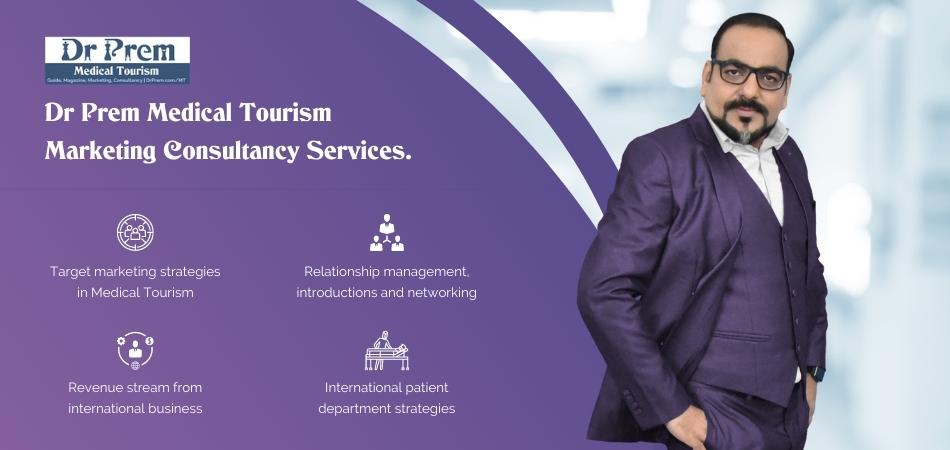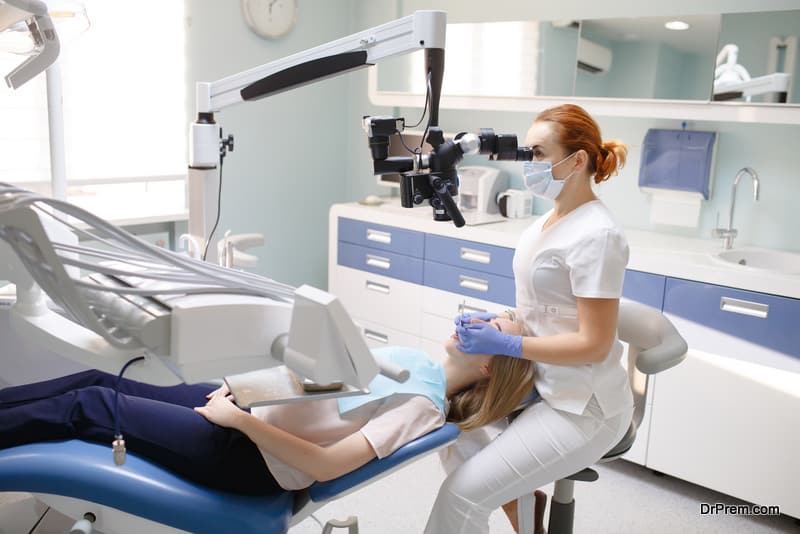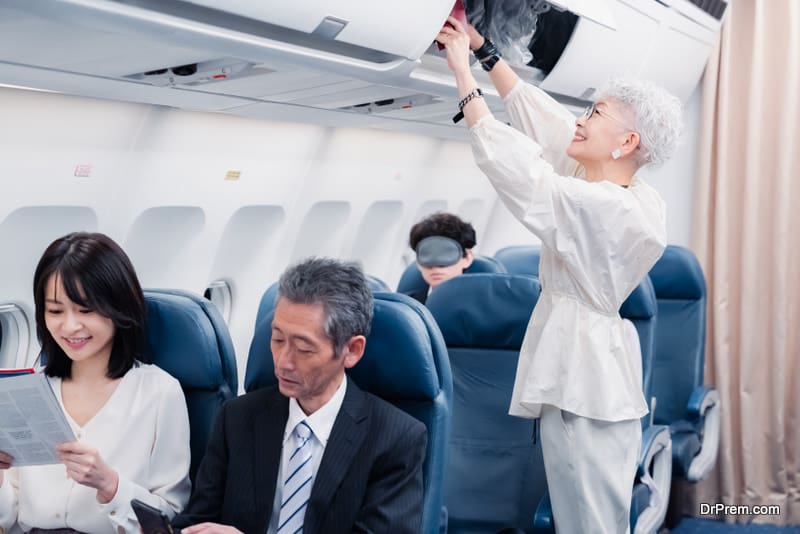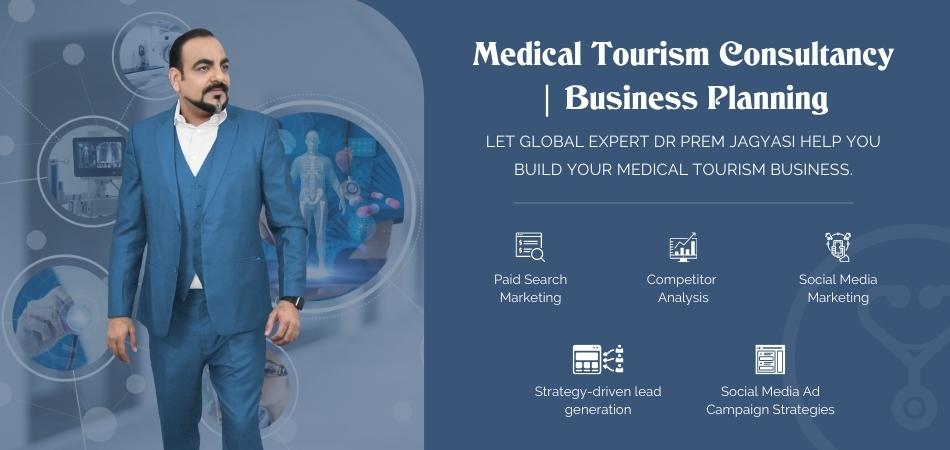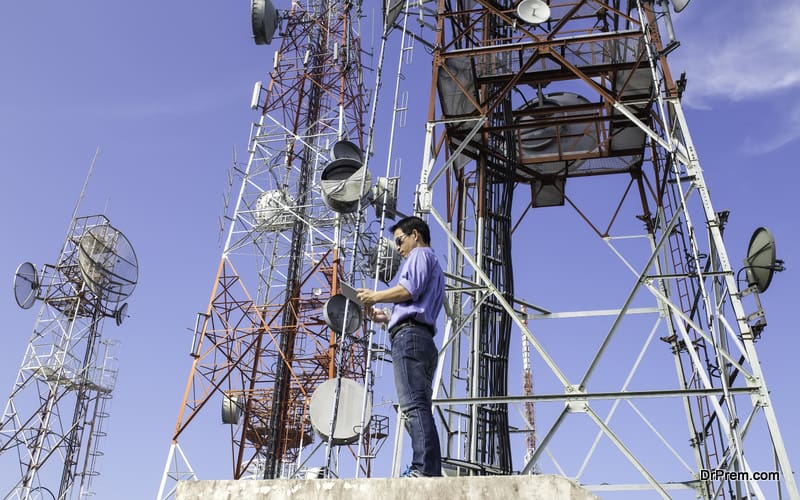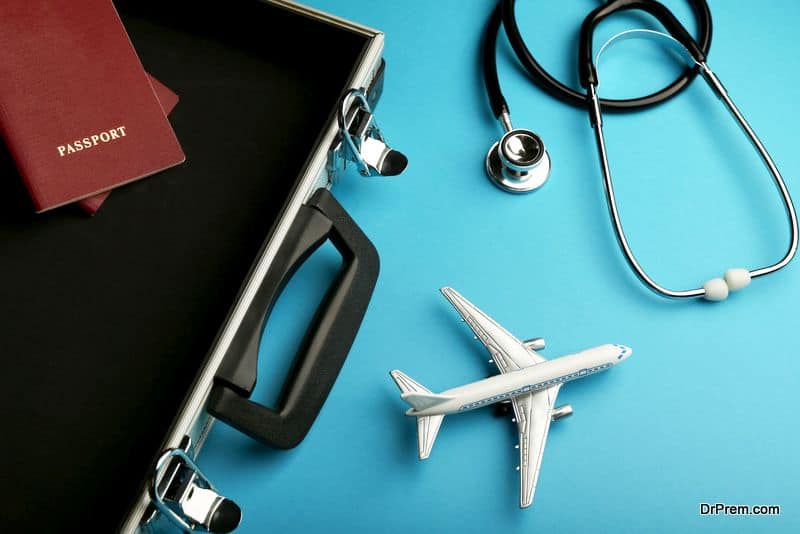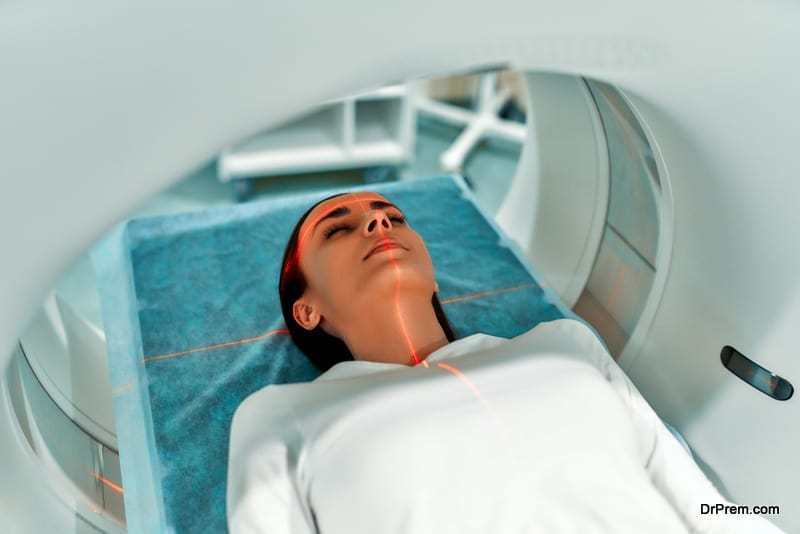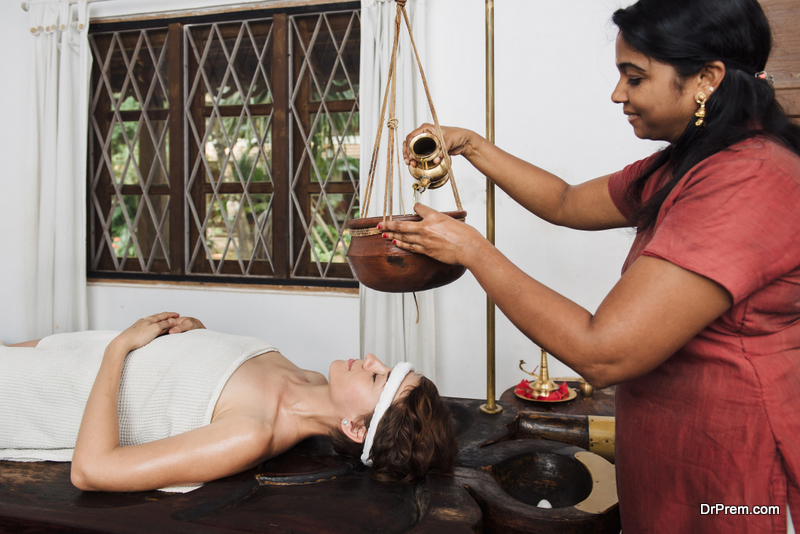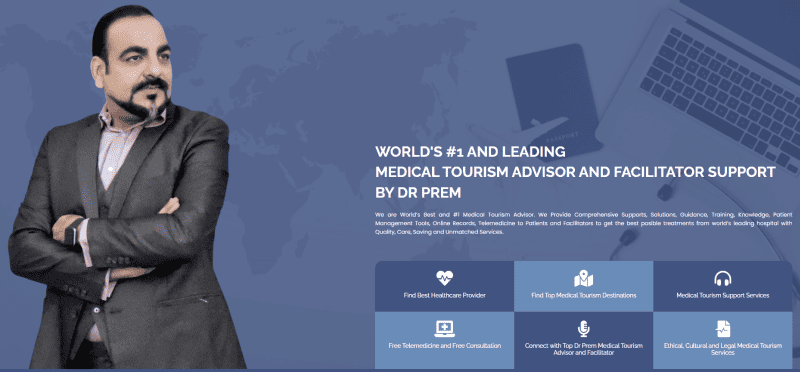Medical tourism in Asia has emerged as one of the fastest-growing segments in the region, and post-pandemic the outlook is robust. According to Fitch Solutions, medical tourism prospects in most of the South East Nations is significantly high. This is not only because of its state-of-the-art healthcare facility but also for their unique wellness tourism propositions.
In this medical tourism guide, we will discuss about the following factors:
A Complete Guide to Medical Tourism in Asia – Drivers, Attractions, Facilities, Popular Procedures, Challenges, Case Study and Popular Destinations
-
Why medical tourism in Asia is growing?
-
How medical tourism fares in Southeast Asia?
-
What are the growth drivers for medical tourism in South East Asia?
-
A close look at the boom in Asia’s medical tourism
-
How medical tourism is putting a strain on health systems in Asia?
-
A quick case study of the Asian medical tourism industry
-
The Future Outlook: Trends and Predictions in Asian Medical Tourism
-
Get Dr. Prem’s Support in Medical Tourism Destination Branding
Why medical tourism in Asia is growing?
There are several reasons behind the success of medical tourism and some of them are as follows:
Low treatment cost
The main reason behind the success of medical tourism is quite simple and evident. Like Americans or Europeans, Chinese people are flock to the Asian medical tourism destinations for remedial surgeries and healthcare facilities. The main reason is the difference in the cost of medical treatment between developed and developing countries.
World class infrastructure
Being residents of the First World Countries, foreign patients are choosing Asian countries for medical tourism to save money and resources for other purposes. A new class of rich and educated generation has emerged in Asia. The medical treatment facilities have been developed and the infrastructure for complicated surgeries has been improved for such patients or citizens.
Financial profits from medical tourism have given rise to the betterment of medical facilities. By travelling to Asian countries for treatment, a US citizen can cut down surgery costs by 50 to 60 percent.
Affordable packages
Medical tourism service providers across Asia have started providing affordable and profitable medical tourism packages that have multiple benefits. People who are ready to go under the knife for remedial surgeries are now opting for medical tourism in Asia. This way they get to travel and see a new, foreign location and get their surgery done at highly affordable prices. The same surgery in their native land would have cost luck.
Employer-backed healthcare travel
Different organizations also have started offering medical tourism as a healthcare facility to their employees.This way they can reduce their cost and the medical tourism industry gains a considerable increase.Employer-backed medical tourism is a growing phenomenon supported by healthcare insurers as well.
Governments of Asian countries are also providing support to these types of organizations, which is further leading to the tremendous growth of medical tourism.
How medical tourism fares in Southeast Asia?
Medical tourism reveals an upward trend world over. Patients Beyond Borders, the US-based industry resource, in a report, states that the world market is expanding at a rate of 25 percent annually.
Medical tourism, as a phenomenon, initiated with the sudden increase of patients from Europe and the US preferred to seek credible and cost-effective medical treatments including dental, cosmetic and other procedures in the Latin American countries like Costa Rica and Brazil. Other countries, especially the third world countries, also realized the potential of medical tourism in boosting their economies and made efforts to divert medial traffic.
The growth of medical tourism particularly in the Southeast Asian region has been steady. Once considered as a niche market, medical tourism has emerged a money-spinner for most Asian nations. With improvements in both, healthcare systems of these countries and basic infrastructure, they are set to rule the roost in the global medical tourism industry in time to come.
In terms of figures, 2.53 million medical tourists in 2012 visited Thailand and the Asian nation earned $4.2 billion from them as foreign exchange. Singapore earned $630 million from medical tourism last year. According to government figures, the medical tourism market in Malaysia has reached 770,000 patients and $200 million in revenue in the previous year.
What are the growth drivers for medical tourism in South East Asia?
The exponential growth of medical tourism in Asian Countries can attributed to a bevy of factors, few of which find mention below.
The ageing baby boomer generation
The baby boomer generation is not getting any younger. They are burdening the already saturated medical care system of their respective countries. Being unable to deal with rise of demand for quality healthcare necessitates many affluent countries to outsource the ageing population to seek medical care in offshore locations.
Here the treatment costs are up to 80 percent less when compared to developed nations. This offers new vistas for the rapid growth of medical tourism in the Asian countries.
Heavy investments in the healthcare segment
The Asian medical tourism hot spots, the most prominent of which are India, Thailand, Singapore, Malaysia and South Korea, have invested lavishly on bettering their medical care infrastructure.
Currently, patients come from affluent nations to receive treatments for ailments that are not yet available in their homelands. These nations have acquired services of medical professionals with foreign degrees, which make them compatible with latest technologies in medical care.
Comprehensive procedure options
The Southeast Asian nations are offering comprehensive list of medical procedure options, many of which are unheard even in the affluent nations of Europe and America. Many patients are willingly going for stem cell treatments and regenerative medicine that are unapproved or under clinical trials in their home countries.
The governments of Southeast Asian nations are consistently increasing their spending on developing medical infrastructure. They are encouraging the healthcare service providers to diversify their list of procedures ensuring steady inflow of medical tourism.
Aggressive promotion
Considering the socio-economic benefits of medical tourism, the governments in most Southeast Asian nations are proactively promoting medical tourism on all possible platforms. Through aggressive promotional campaigns, the governments are reaching out to patients in every nook and corner of the globe.
Thus far, they have succeeded in benchmarking their strengths among the target audiences and managed to garner a significant number of medical care seekers. A majority of countries of the region has combined general travel with medical tourism.
Their campaigns include a promise of natural, cultural and architectural splendor exclusive to their countries along with their abilities to cure the ailments of the visitors. No doubt, this unified approach is doing wonders to the growth prospects of medical tourism.
Why medical tourism is a flourishing industry across Asia?
According to Asia Medical Tourism Analysis and Forecast for 2015, the medical tourism industry of Asia will reach a growth rate of USD $8.5 billion this year. The main reasons behind the huge success that medical tourism has achieved in Asia are quite simple and evident.
It is not true that the phenomenon of medical tourism has encompassed entire Asian continent but in some countries like Thailand, India, Malaysia, Philippines, and South Korea it has boomed over the past few years. These countries are developing very fast and have become capable of delivering excellent medical facilities to the citizens and foreigners.
The Chinese traveler market driving medical tourism in Asia
Not just Americans or Europeans but even Chinese people are flocking to other Asian medical tourism destinations for corrective surgeries and healthcare facilities. The main reason is the difference in medical treatment costs between developed and developing countries.
Reliance on the healthcare of developing nations
Despite of being residents of First World Countries, foreign patients are opting for medical tourism to save money and resources for other purposes. A new class of rich and educated generation has emerged in Asia. The medical treatment facilities have been evolved and the infrastructure for intricate surgeries has been improved for such citizens.
The incentive of monetary profits from medical tourism has given rise to the betterment of medical facilities. A US citizen can cut down surgery costs by 50 to 60 percent by travelling to the Asian countries for treatment.
Wellness tourism propositions
Medical tourists in Asian destinations are mostly long stay travelers. They often enjoy the recuperative phase through various wellness activities or curated programs for better well-being minimizing the chances to fall sick again. Asian destinations with their rich and unique traditional medicine are creating attractive medical wellness packages helping patients make the best use of their stay. Patients not only recover faster but go through an extremely delightful experience.
Lucrative offerings from medical tourism facilitators
The medical tourism facilitators across Asia have started providing lucrative packages that have multiple benefits. People who are ready to go under the knife for corrective surgeries or augmentative surgeries are now opting for medical tourism in Asia.
This way they get to travel and see a new, exotic location and get their surgery done at lowest possible rates. The same surgery in their native land would have cost a fortune.
Different companies have started offering medical tourism as a healthcare facility to their employees. This way they can reduce their cost and the medical tourism industry gains a substantial boost.
Along with affordability, great quality of treatments is another reason that lures foreign patients to Asia. The doctors and surgeons working in the Asian hospitals are highly qualified and newest surgical equipment are being used.
A tour around the city and accommodation at nice hotels are part of the packages offered. Together all this has made the development of medical tourism a reality. Now we hope that soon this industry will reach new heights of success in India.
A close look at the boom in Asia’s medical tourism
Millions of tourists apparently travel to foreign countries in search for more affordable cosmetic treatments. However, medical tourism is said to have increased in Asian countries manifold making them a hub of such medical services. With this rising exodus of medical tourists, Asian countries derive multiple benefits as well as pose a risk. Here is how.
The unmistakable Asian appeal in terms of healthcare and tourism
Asian countries are fast becoming the preferred destinations for medical surgeries, which appeal to both the people of western and Asian countries owing to the lower costs and the medical excellence.
Countries such as Taiwan, India, Singapore, Thailand, South Korea, and Malaysia figure amongst the top Asian medical tourist destination and are proof of how the medical tourism trend has reverted from high-income countries to low-income ones.These countries are travelled particularly for cheaper medical treatments, such as transplantation, and cosmetic and dental surgeries.
Globalization of healthcare
The governments of these countries are particularly investing in adapting international medical techniques and accreditations followed in western countries, with an eye to clinical specialism. This has also led to the globalization of healthcare services, wherein the country promotes its tourism and healthcare services simultaneously.
These countries benefit tremendously from medical tourism through the revenues and there is also an additional human resource benefit derived out of medical tourism as emigrated health workers are attracted to return to their native country- thus reversing the “brain drain” concept.
Positive spillovers in Medical Tourism
Positive spillovers may include the expansion of health-sector infrastructure and also roads and telecommunications. Equity benefits are created potentially by hospitals cross-subsidizing care for domestic patients, or helping to fund capital investment.
All patients can then use capital investments, such as MRI scanners, in the hospital or health system. Finally, there are symbolic dividends — ascension into the elite club of trading nations through domestic high-tech service industry development.
Do these anticipated benefits occur?
The truth is that we simply do not have enough data on country indicators.The involvement of transnational corporations may result in profits from medical tourism and ancillary activities being remitted overseas.
While some evidence suggests medical tourism generates modest contributions to GDP, there are concerns about human resource migration to the private sector, with professionals lured by better salaries and work opportunities.
It is possible resources will be taken away from the domestic population and instead invested into private hospitals, where foreign patients benefit from a high staff-to-patient ratio and expensive, state-of-the-art medical equipment. Such private activity is further supported by tax breaks and public subsidies for the training and education of health workers.
Another possibility is that investment is directed towards urban tertiary care rather than more appropriate domestic-population needs in rural primary care centers. The implications clearly vary depending on whether international patients are using spare capacity or competing with domestic patients.
However, there is a curious gap in research and policy analysis. System-level evaluation of medical tourism policy and impact is absent. There is also a lack of independent government-funded work examining the pros and cons of medical tourism, and how benefits are distributed across the population.
Medical tourism initiatives are launched as national policy platforms with much fanfare. However, it becomes difficult to distinguish aspiration from reality given the veneer of country promotion strategies, provider rhetoric, and industry grandstanding. In addition, one may question the political will that exists to grapple with the nature of system-level impacts.
Deeper empirical understanding of these impacts could inform policy and the regulation or stimulation of private sector activities. This may include ways to ensure human resources are made available to the domestic population — benefitting the domestic health system.
Certainly, medical tourism has the potential to influence the distribution of healthcare resources to the poorer local population. However, it remains to be seen whether universal health coverage in East Asian countries and medical tourism development can go hand in hand.
National strategies must understand the risks within medical tourist markets. It is necessary to engage with the evidence when considering the benefits and demand for medical tourism globally. There is no simple upward curve: travel to particular countries may be volatile, reflecting their own political, climatic and economic events. There are also shifts in consumer preferences and exchange rates.
To date, there has been relatively limited success by medical tourist providers in tapping revenue streams from private and workplace insurance systems or outsourcing from western public health systems. It is difficult to prevent regulatory interest and public investment from being captured by the private sector and that the interests promoting medical tourism development are adequately countered.
Medical tourism may benefit individual patients, treating clinicians and the private healthcare providers. However, it is time to ask — do the benefits add up?
How medical tourism is putting strain on health systems in Asia?
Medical tourists from all over the world come to Asia for receiving various types of treatments and surgical procedures. In Southeast Asian nations, there has been a quick growth in the medical tourism sector, with about two million people annually visiting these countries for treatments.
However, according to reports from the World Health Organization (WHO), most of the skilled healthcare specialists and caretakers are involved in the treatment of medical tourists at private facilities. This has led to public medical facilities with staff that is undertrained.
Consistent healthcare shortage in underserved areas
In remote or rural areas, there has been a constant shortage of trained medical professionals and resources. Experts suggest that it can become a critical issue in the near future if medical tourism keeps on draining skilled resources from the public health sector. In several Asian countries, there has been good growth in medical tourism.
Brain drain
Millions of medical tourists annually visit these countries for receiving affordable healthcare services. Further efforts have been going on to increase these numbers in near future. Undoubtedly, the brain drain is going to happen, as trained medical professionals would like to move on to the profitable private health sector.
Studies on issues related to health workers indicate that there has been an increasing trend of health worker migration to richer nations, which is not beneficial for poor countries. This is happening due to health workers receiving overseas training and accreditations.
Additional factors contributing to brain drain include e-health services like medical transcription and increased investments in medical infrastructure. Even though these developments are done by the nations to attract more medical tourists, these are actually leading the talent to focus more on the medical tourism industry rather than catering to the domestic healthcare scene.
A shortage of health workers cannot solely be blamed to have happened due to migration issues. The lack of training to fill the resource gap is also a contributory factor.
The actual requirement for countries is not to set up competing training facilities. In fact, they should work in collaboration so mutual investments can be made toward health worker training, as well as the development of entire health systems of these nations.
There have been some efforts made in this direction by the UN nations, but these still need to take shape. For this purpose, the global healthcare structure should become sound and efficient. Thus, the strain put by medical tourism on Asian health systems can be observed, but there is a need to take major corrective actions globally.
A quick case study of the Asian medical tourism industry
Long waiting times, high costs and slow medical services are turning desperate patients towards medical tourism. Not just patients from the developed countries like US and Canada, but also the helpless patients from Bangladesh are choosing Asian medical tourism destinations for speedy, competent and affordable healthcare.
Every year, more people are warming up to the idea of traveling for healthcare and joining the already popular medical tourism bandwagon. Some of Asian countries, which have unbelievably well-developed healthcare infrastructures, have emerged as key players in the market. There are several key factors that are helping Asian countries capture a huge market share of the medical tourism industry.
India has secured a place among the top three
According to a report produced by KPMG and FICCI, Singapore, Malaysia and India earned 60% of the total revenue generated by the Asian medical tourism industry in 2012.
India has gained foreign support and investment in developing its medical care infrastructure. The private healthcare segment has utilized revenues for incorporating the latest medical technology into its existing systems. Many private Indian hospitals have received JCI accreditation.
The Indian doctors and surgeons are well trained in national medical schools and universities. The medical research sector of this country has also developed greatly in the last decade. Indian hospitals usually hire talented doctors and surgeons, educated locally.
This helps in controlling the costs of medical treatments. Apart from amazing medical privileges, another important reason why India has become popular among medical tourists is the low cost of treatments. The leading private hospitals earning the highest revenue from medical tourism industry are The Apollo Group, Fortis Healthcare, and Narayana Health.
Singapore is popular among medical tourists
Singapore is a trusted medical tourism destination for different types of treatments like organ transplants, cancer treatments, complicated heart surgeries, and advanced fertility treatments.
Though living costs in Singapore are comparatively high, medical care can be obtained at affordable prices. The cost of knee replacement or heart surgery in Singapore will be more than its neighbors like Malaysia or Thailand.
Medical tourists are still flocking to Singapore because of the high-quality medical facility and well-equipped private hospitals. There are already more than 15 hospitals in Singapore which have special wards for foreign patients and employ English-speaking doctors and nurses.
Thailand is not lagging behind
In 2013, 1.2 million foreign patients visited Thailand for getting different types of medical treatments. Previously, Singapore was believed to be the top Asian medical tourism destination but Thailand has emerged strongly.
As of Dec 2021, there are 60 JCI-accredited medical clinics and hospitals in Thailand. It is a favorite for individuals who are looking for low-cost cosmetic surgery destinations. Thailand also offers high-quality dental care, eye surgery, and even IVF treatments. Medical tourists prefer Thailand also because the cost of severe surgeries like hip replacement is 50% less than the US and other developed countries.
Malaysia giving tough competition
One of the most popular Asian tourist destinations has also evolved into a trusted medical tourism destination. Malaysia not just offers high quality and cost-effective medical treatments but also beautiful tourist spots for relaxing and rejuvenating.
Medical tourists are interested in getting more at a lower price tag. Medical tourism providers are using the picturesque tourist spots for attracting more foreign patients. Malaysia is now offering a host of advanced medical treatments but it is known mainly for low-cost health screening and complementary treatments.
Some of Asian countries have turned into busy medical tourism hubs. The scope of medical tourism is wide and more Asian countries are trying to tap into this potent market.
The Future Outlook: Trends and Predictions in Asian Medical Tourism
Given the above factors, the future of medical tourism in Asia is promising. With the opening up of world tourism and destinations stepping up their efforts to attract medical tourists with unique offerings, this part of the world is set to lead the market. The appetite for high quality and affordable healthcare is growing along with the crave for sustainable well-being through holistic programs.
Asia, already an established wellness tourism destination, has been integrating digital innovation and AI to enhance patient engagement and experiences. Additionally, merging of contemporary healthcare and traditional wellness programs has broadened the sector’s appeal drawing a diverse client base from different corners of the world.
Despite the appreciable growth, medical tourism in Asia has to surmount critical challenges related to cultural barriers, legal and ethical issues on regenerative medicine, and over dependency on specific markets. Shifting geopolitical landscape and the inability to adapt to emerging customer behaviors can further retard the region’s medical tourism prospects. The success of Asian medical tourism hinges on its ability to navigate these complexities offering patients pleasurable and seamless experiences with a blend of advanced, accessible, affordable, and personalized packages.
Get Dr. Prem’s Support in Medical Tourism Destination Branding
Dr. Prem Jagyasi, a globally-recognized medical tourism and wellness expert has travelled to 65+ countries assisting leading medical tourism destinations to stand out with unique offerings. With enriched experiences as a medical tourism consultant, Dr. Prem’s invaluable insights bring new perspectives on sustainable destination growth.
As a medical tourism advisor, his incredible guidance has helped emerging and established destinations create a unique niche and grow through targeted marketing techniques. If you are looking for structured and effective destination-building strategies, connect with Dr. Prem or book a one-on-one consultation.



